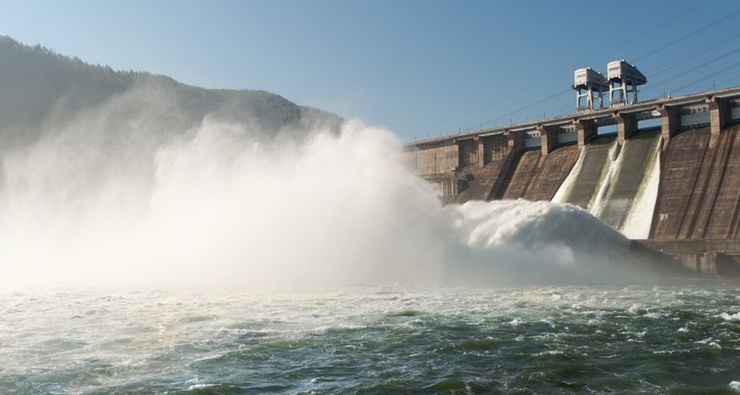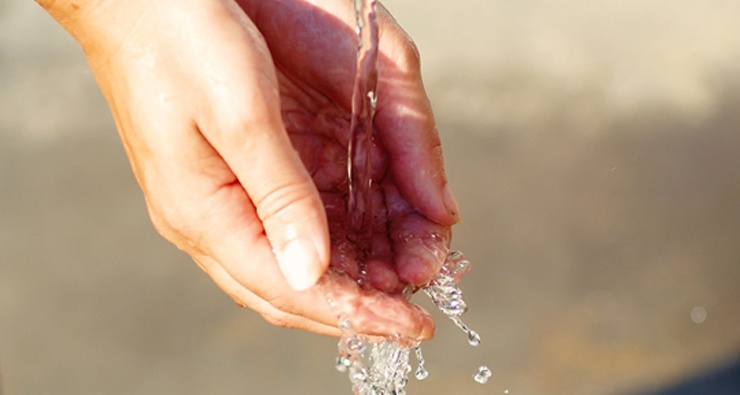Earth’s surface is approximately 71 percent water.
Of that percentage, our oceans hold about 96.5 percent of it, while things like water vapor, rivers, lakes, ice caps, glaciers and aquifers make up the remaining 3.5 percent.
STAY UP TO DATE ON THE LATEST IN AGRICULTURE—SIGN UP FOR OUR NEWSLETTER.
And of that 3.5 percent, only one percent (326 million trillion gallons) is easily accessible and available for drinking water, public utilities, agriculture, industry, mining, recreation and the environment.
326 million trillion gallons of water might seem like a lot. But realize this—all of Earth’s water has been here since before the dinosaurs.
We cannot create new water. We can turn salt water into fresh water, but it is a very expensive process.
In America, we rely on groundwater, surface water and snow melt. In some areas (Florida and California), we have become proficient in taking our wastewater, treating it to drinking water standards and then reusing it for all kinds of applications, particularly in landscape irrigation.
HOW UNPREDICTABLE RAINFALL AFFECTS FARMERS
Unfortunately, the tried and true way of watering crops—rain—is becoming more unpredictable. In the past, Floridians could essentially set their clocks for the same afternoon thunderstorm that came to visit every day. But up until the 1980s, weather patterns have become more unpredictable, and in the last few years, Florida has experienced two historic droughts as well as a series of increasingly inconsistent rain patterns.
This makes irrigation very challenging for growers. So many turn to public utility companies to obtain the bulk of their water, costing an estimated $2 to $175 per acre, depending on the region and crop. This means irrigating a 100-acre farm could cost anywhere from $200 to $17,500 each time the pumps are turned on.

THE HUMAN IMPACT ON OUR WATER SUPPLY
According to the National Alliance for Environmental Reform, more than 30 dams have been removed in California since 1979. This has eliminated over 100 billion gallons of water storage, leaving half of the state’s rainfall uncaptured and more than 1.4 trillion gallons being flushed out to the sea since 2008.
On the other hand, public utility companies have defined service areas making growth planning much more simple. They hire planners that audit the area’s water supply and usage to look 20 years into the future using all kinds of growth models. Then, they can form cooperatives, build reservoirs and diversify their system.
HOW TO START WORKING TOWARD WATER SUSTAINABILITY
A great resource to educate yourself on agricultural water use is the Unites States Geological Service. Their website (The USGS Water Science School) showcases an in-depth study of irrigation water use in America.
Let’s look back to the average consumer and factor out all other water usages. The average household uses about 100 gallons of water per person per day. Based on 2010 population figures, America uses about 31 billion gallons of water per day. If each household were to cut back our average water use to 80 gallons per day, America would immediately save over 6 billion gallons per day. This can be achieved, many communities in America actually report a lower per capita than 80 gallons.
Since we cannot create new water, we must look to conservation. Just by turning the water off while brushing our teeth, only running the dishwasher or washing machine when they’re full and watering the lawn only when it’s needed (not when the timer turns on), we can achieve this goal of 80 gallons of water per day.

USING PRECISION AGRICULTURE TO SAVE WATER
For growers, conservation is priority one because it allows them to produce more with less. Conservation keeps the growers’ cost per acre down, allowing Americans to keep our cost for groceries down.
Achieving water sustainability is not an option, it’s a necessity. Growers have been doing their part and with precision-agriculture technologies they will have the ability to save more. It’s time for the rest of us to step up to the plate.
We’ve all heard the phrase: “Where there’s a will, there’s a way.” In order to feed America, growers gladly face adversity each and every day, rising to the occasion each and every time. While innovation is easily seen from the military, Silicon Valley and of course, NASA, how often do we associate innovation with agriculture?
On-farm technology is being embraced all over America and with new advances in precision agriculture, growers are seeing improvement in water quality and a reduction in groundwater usage. At the same time they are increasing their yields—yields that have to feed an additional 9 billion people by 2050.
To do your part as a consumer, look for ways you can save water in your home. For growers, contact Highland Precision Ag today for more information about how implementing precision-agriculture technologies can help you decrease your environmental impact.